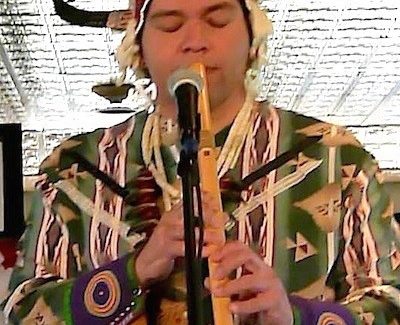Nez Perce speaker tells tales passed down for generations
Why do dogs go through the ritual of tail sniffing when they encounter each other? Because they are looking for their own tail.
At least that’s the tale that Nez Perce speaker White Bull told on our S.S. Legacy cruise. Sounds about as good an explanation as any other.
“We are a very childlike people and we have stories for why things are the way they are,” he said. “Those stories are also how the history of my people was passed down.”
That’s one thing I have really enjoyed about my S.S. Legacy cruise on the Columbia and Snake rivers. Every evening after a leisurely cocktail hour (remember, all drinks are complimentary on this cruise) and a delicious dinner, we settle into the Grand Salon at 8:15 for an evening presentation.
Some of the nightly programs on my cruise included “The Music of Lewis & Clark,” “The Whitman’s Mission,” and “Discovery of the Columbia River.”
On this special evening, White Bull from the Nez Perce has come aboard the Legacy to explain some of the customs, traditions and history of his Native American tribe. Along with being a wealth of information, White Bull is also entertaining.
TALE ABOUT DOGS’ TAILS
The story about the dogs involves the Creator and the creation of human beings. As the legend goes, after the Creator had created this new race the dogs asked for just one day to live as this upstanding two-legged creature. The canine wish was granted, with one stipulation – dogs had to return to their original form complete with their tails at the end of that special day. If not, the dogs would be destroyed.
“The dog people took their tails off and went walking out of the longhouse on two legs,” White Bull said. “The Creator said they would have 24 hours to live like us … The dog people had a ball.”
But soon the sun began to set.
“The dog people went rushing back into the longhouse and picked up a tail in a hurry and put it back on,” White Bull said.
In all the melee to get a tail from the discarded tail pile, the dogs were not careful about grabbing the correct one that belonged to them. They just picked up any old tail to meet the 24-hour deadline. And, of course, most of the dogs ended up with another dog’s tail.
“That’s why today when two dogs come together, they sniff each other’s tails,” White Bull said. “They are looking for their own tails.”
The story also explains why dogs are known as “man’s best friend.”
“That’s why dogs are so attached to us,” White Bull said. “They have had a taste of what we can do and the lives we lead and they have never forgotten.”
NEZ PERCE COUNTRY
On our S.S. Legacy cruise, we traveled through Nez Perce country. For countless generations, the Nimiipuu or Nez Perce lived among the rivers, canyons, prairies, and mountains of this area. The Nez Perce original territory covered about 17 million acres, including land in Idaho, Washington, Oregon, Montana, and Wyoming.
“We got our name from French trappers who called us ‘Nez Perce’ or ‘pierced nose.’ We don’t pierce our noses but the name stuck,” White Bull said.
The Nez Perce helped Lewis & Clark in their expeditions in the Northwest. In their journals, Lewis & Clark recorded how peaceful and helpful the Nez Perce were. That friendly relationship with white settlers continued but later led to disaster. In an initial treaty the Nez Perce were promised a large part of their ancestral homeland. However, the discovery of gold brought a huge stampede of gold hunters and settlers within the Nez Perce land.
Problems accelerated until the Nez Perce War of 1877, the last great Indian conflict in American history. It ended on Oct. 5, 1877, at Bear Paw Battlefield outside Chinook, Montana. Following a five-day battle and siege, the Nez Perce ceased fighting with Chief Joseph speaking his memorable words – “I will fight no more forever.”
Today, the Nez Perce Reservation is located in North Central Idaho. “There are about 3,500 enrolled members in the Nez Perce tribe but only around 300 full-blood Nez Perce,” White Bull said. “I am not 100 percent Nez Perce. I am 25 percent Nez Perce.”
Native customs, legends, and language are being lost as years pass, White Bull said. If the cultural losses and requirements to belong to the Nez Perce tribe continue, he concludes, “In 100 years, there will be no more Nez Perce.”
Story and photo by Jackie Sheckler Finch















View Recent Comments